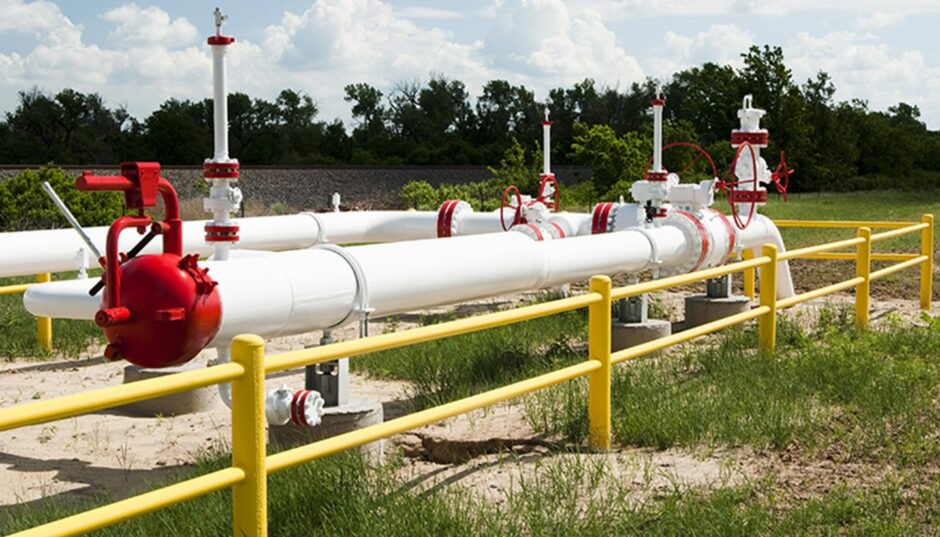
Mathematical modelling can demonstrate how to safely blend hydrogen with natural gas for transport in existing pipeline systems, claim researchers at the famous Los Alamos National Laboratory in the US.
Arguably foremost among these is a concept already under development at Germany’s Fraunhofer Institute which, in late 2021, proposed that existing pipeline networks could be safely retrofitted to carry hydrogen.
Professor Alexander Martin, director of the Fraunhofer Institute for Integrated Circuits IIS said then: “It would be perfectly conceivable to blend hydrogen into natural gas at a concentration of 5% in long-distance pipelines and 20% in the distribution grid in order to supply the heating market with green energy.”
However, it’s not simple. Mixing hydrogen into a natural gas pipeline changes how the gases flow, which will create new conditions for operators, according to Anatoly Zlotnik, a mathematician at Los Alamos.
He is a specialist in modelling, designing and controlling energy-transmission systems.
Using nonlinear partial differential equations, Zlotnik and his Los Alamos colleagues have developed a mathematical model for transporting heterogeneous mixtures of natural gas and hydrogen through pipeline systems.
This includes compressor and regulator units, supply stations that inject gas into the network at defined pressure and hydrogen blends, and flow stations that withdraw the mixture from the network.
They have determined that limiting the rate of change of hydrogen injection into a natural gas pipeline will prevent large, rapid changes in pressures. Their methods for simulating a pipeline network could also allow operators to develop standards on injection rates.
Hydrogen is a clean fuel that doesn’t emit carbon dioxide when ignited. In a fuel cell, hydrogen plus oxygen create electricity to power cars, trucks and facilities.
Hydrogen can also be blended with natural gas for use in appliances such as household furnaces and dryers, or it can be burned to power manufacturing facilities or generate electricity.
Given the volatile nature of hydrogen and the critical need to assure safe export to market, it is crucial that dependable models and methodologies are developed
The European Union is showing great interest in the idea of enriching the existing piped gas offering to the marketplace.
Last year, the Fraunhofer published a report that said natural gas currently accounts for at least 22% of EU27 greenhouse gas emissions.
However, in order to achieve 2050 climate targets, emissions from natural gas must decrease continuously over the coming almost three decades.
And injecting hydrogen into gas streams is seen as a means of reducing that particular CO2 footprint relatively easily, so long as the blending protocols under development are proven reliable.
But it is already clear that there is a big issue … sufficient reliable supplies of hydrogen suitable for blending.
Fraunhofer’s report states: “Decisive for this analysis is that hydrogen blending competes with direct use of hydrogen in focused applications. In the medium-term, the limiting factor is the availability of green hydrogen, which means that additional renewable energy (RE) capacity has to be built to cover the hydrogen production.”
It also warns: “A blending level up to 20% (by volume) is technically achievable, but the feasibility of different blending levels depends on factors such as the origin of the natural gas the hydrogen would be blended with.”
Apart from this, there are still many uncertainties regarding (long-term) material sensitivities (pipes, devices, etc.) in particular with regard to a reduced lifetime when hydrogen is present which require further investigations.”
Zlotnik and his colleagues are well aware of such issues and lay out the challenges in a research paper published in May.
They note: “Several studies have examined the effects of the properties of the blended gas, such as density, viscosity, phase interactions, and energy densities, on the pipeline network and end-use applications.
“Other recent technical studies focus on the feasibility and safety of injection and pressurisation.
“In this study, we formulate an economic optimisation problem for determining a feasible flow allocation that maximises economic benefit for users of a pipeline system that transports a blend of two significantly different gases.
“The formulation is effectively a single auction market mechanism in which suppliers offer natural gas or hydrogen at a given price per mass flow rate, and consumers bid for deliveries at a given price per energy content.”
Recommended for you
